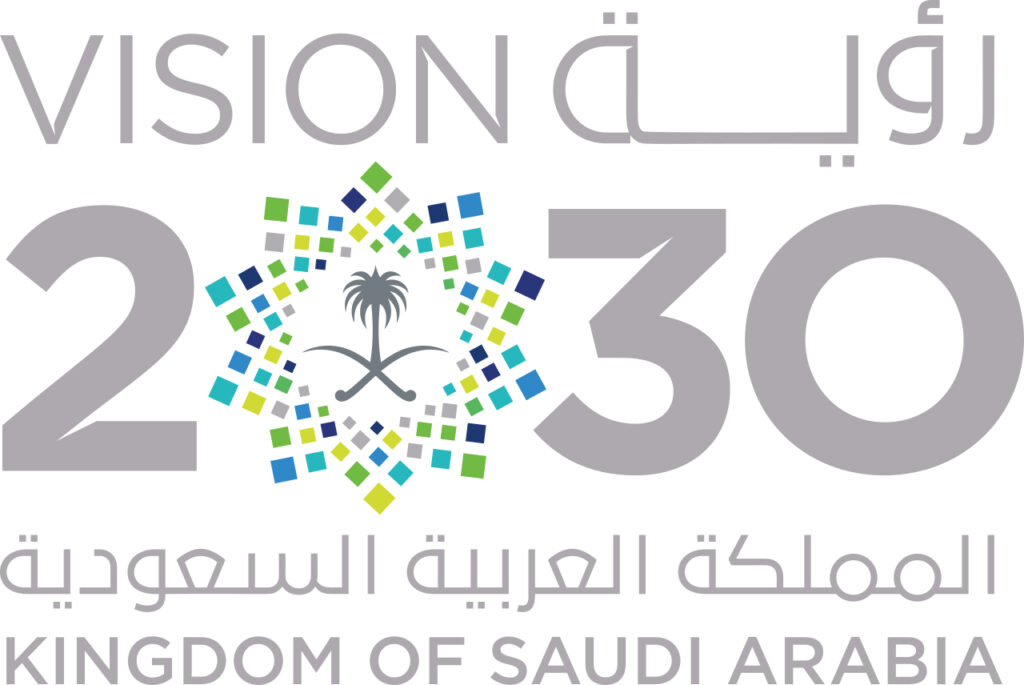Under Crown Prince Mohammed bin Salman’s ambitious Vision 2030, Saudi Arabia is rewriting its future. Traditionally known as the world’s leading oil producer, the Kingdom is now charting a transformative path that pivots from oil dependence toward a diversified economy anchored in tourism, culture, and heritage. This comprehensive reform agenda seeks not only to bolster economic growth but also to enhance the global image of Saudi Arabia as a vibrant destination steeped in history, art, and spiritual significance.
A New Chapter in Saudi Arabia’s History
For decades, Saudi Arabia’s economic success was intrinsically linked to its vast oil reserves. However, with the realization that the global energy landscape is evolving, the Kingdom has recognized the necessity of diversifying its revenue streams. Vision 2030 represents a strategic response to these global shifts—a plan to transform the economy through structural reforms, innovation, and investment in non-oil sectors. Central to this initiative is the spotlight on tourism and culture, which not only reflect the country’s rich heritage but also serve as vehicles for sustainable economic development.
At the heart of Vision 2030 lies a commitment to unlocking Saudi Arabia’s untapped potential. This includes leveraging its unique cultural and historical assets—from ancient archaeological sites and UNESCO World Heritage landmarks to its deep-rooted religious traditions. The Saudi Tourism Authority has been tasked with a pivotal role: to promote the Kingdom’s centuries-old history and vibrant cultural mosaic to an international audience, inviting millions of visitors to experience a country in transition.
Transforming the Economic Landscape
The transformation envisioned in Vision 2030 goes beyond mere economic diversification. It is an invitation to the world to rediscover Saudi Arabia through a lens that emphasizes heritage, art, and community. Dr. Imad Kashmiri, a representative of the Saudi Tourism Authority, has highlighted that this vision has paved an entirely new path for economic growth. By capitalizing on its historical and cultural wealth, Saudi Arabia is positioning itself as a key global tourism destination—a move that promises not only to attract international visitors but also to stimulate local industries, create jobs, and drive innovation.
The strategic focus on tourism and culture is a cornerstone of Saudi Arabia’s broader efforts to reduce its reliance on oil. As part of this economic diversification, the Kingdom is channeling significant investments into infrastructure, hospitality, and leisure projects. These initiatives are designed to create modern, world-class facilities that cater to the evolving demands of global travelers, while also preserving and celebrating the nation’s unique cultural identity.
Revitalizing Urban Landscapes: The Case of Jeddah
One of the most visible symbols of Saudi Arabia’s transformation can be found in the city of Jeddah. Known for its stunning coastline along the Red Sea, Jeddah has become a living showcase for the Kingdom’s commitment to enhancing public spaces and promoting tourism. A prime example of this urban revitalization is the extensive redevelopment of a nine-kilometer stretch of coastline in the heart of the city.
This revitalized stretch is no ordinary beachfront. It has been meticulously transformed into a series of attractive leisure spots that cater to both locals and tourists. The Jeddah Yacht Club and the Corniche are now major tourist attractions, offering a range of experiences—from luxury yacht cruises and private boat rides to casual fishing along the pristine blue waters of the Red Sea. As day turns to night, the area remains alive with activity, drawing visitors who come to enjoy the vibrant atmosphere and breathtaking views.
An iconic landmark that stands out in this transformed landscape is the King Fahd Fountain. Recognized by the Guinness World Records as the tallest fountain in the world, the King Fahd Fountain is more than just a marvel of modern engineering. Its towering jets of water, illuminated against the night sky, symbolize the Kingdom’s rich heritage and the innovative spirit driving its transformation. According to Dr. Kashmiri, this fountain, installed in front of the royal palace on an island near Jeddah, has deep historical roots in Arab culture, making it a cherished emblem of Saudi heritage.
Showcasing a Rich Cultural Tapestry
Saudi Arabia’s cultural heritage is as diverse as it is ancient. The Kingdom boasts a tapestry of traditions, arts, and historical narratives that span millennia. From the Nabatean tombs of Madain Saleh to the bustling souks and modern art galleries in Riyadh, there is a continuous interplay between tradition and modernity that captivates visitors and scholars alike.

As part of Vision 2030, efforts are underway to conserve and showcase this cultural legacy. Religious tourism also plays a significant role in the Kingdom’s cultural landscape. Every year, millions of pilgrims visit Saudi Arabia for Hajj and Umrah, journeys that are deeply spiritual and historically significant. The government’s renewed focus on tourism has led to improvements in facilities and services that enhance the pilgrim experience, ensuring that visitors from around the world can engage with the sacred sites in comfort and dignity.
Infrastructure: Building the Future on a Strong Foundation
A critical component of Saudi Vision 2030 is the massive overhaul of the country’s infrastructure. The aim is to create a world-class environment that supports tourism, commerce, and cultural exchange. . Modern hotels, resorts, and recreational facilities are also part of this sweeping transformation.
The redevelopment of urban centers like Jeddah is just one piece of a larger puzzle. Across the Kingdom, cities are being reimagined to become hubs of innovation and tourism. These urban centers are designed to blend modern amenities with traditional architecture and cultural landmarks, offering a unique visitor experience that is both futuristic and steeped in history.
The Role of the Saudi Tourism Authority
At the helm of this cultural and economic renaissance is the Saudi Tourism Authority, an organization tasked with the monumental responsibility of rebranding the Kingdom on the global stage. Through strategic marketing, partnerships, and international collaborations, the Authority is actively working to dispel outdated stereotypes and highlight Saudi Arabia’s modern, progressive identity.
Promotional campaigns are underway to attract tourists from across the globe. These initiatives emphasize the Kingdom’s scenic landscapes, historical sites, and world-class leisure facilities. Whether it’s a luxury yacht cruise along Jeddah’s coast or a cultural tour of ancient archaeological sites, the message is clear: Saudi Arabia is open for exploration and ready to offer an unparalleled travel experience.
Dr. Imad Kashmiri’s insights underscore the transformative potential of this new approach. He notes that Vision 2030 is not merely a policy document; it is a comprehensive strategy that integrates economic development with cultural preservation and community empowerment. By leveraging its rich heritage and modernizing its infrastructure, Saudi Arabia is creating an environment where tourism can thrive and contribute significantly to the national economy.
Economic Diversification: Beyond Oil
The economic diversification strategy underpinning Vision 2030 is a response to both domestic needs and global trends. With oil markets subject to fluctuations and the global shift toward renewable energy, Saudi Arabia has recognized the need to build a resilient economy that is less vulnerable to external shocks.
Tourism, culture, and heritage have emerged as critical pillars of this strategy. By investing in these sectors, the Kingdom aims to create new revenue streams and reduce its dependency on oil exports. This economic shift is not just about financial stability—it is also about social transformation. The development of tourism infrastructure has led to job creation, skill development, and opportunities for entrepreneurship, particularly among the youth and women. These sectors are seen as catalysts for broader social change, fostering an environment where innovation and creativity can flourish.
The vision of transforming Saudi Arabia into a leading economic and trade hub in the region is a testament to the forward-thinking mindset of its leadership. Senior royals, including Crown Prince Mohammed bin Salman and other high-ranking officials, have articulated a clear vision: within the next decade, the Kingdom will not only be an energy powerhouse but also a dynamic center of commerce, culture, and tourism. This dual focus on economic and cultural revitalization is poised to redefine the nation’s role in the global arena.
Global Perceptions and the Road Ahead
Saudi Vision 2030 is more than an internal economic strategy; it is a bold reimagining of the Kingdom’s global identity. For many years, Saudi Arabia was perceived primarily through the lens of its oil wealth and conservative social norms. Today, however, the narrative is shifting. The Kingdom is emerging as a destination that celebrates both its ancient heritage and its modern aspirations.
International tourists, business leaders, and cultural enthusiasts are increasingly drawn to the transformative energy that defines Saudi Arabia’s current era. This shift in perception is being driven by a series of high-profile events, international partnerships, and progressive reforms that signal a new era of openness and opportunity. As the world becomes more interconnected, Saudi Arabia’s efforts to showcase its cultural and historical assets are likely to pay dividends, attracting not only leisure travelers but also investors and global talent.
The revitalization of urban spaces like Jeddah’s coastline serves as a microcosm of the broader changes sweeping the nation. Here, the blend of leisure, culture, and heritage creates a unique environment that is both welcoming and inspiring. Visitors can enjoy a day of luxury and relaxation by the Red Sea, explore ancient sites steeped in history, and witness firsthand the ambitious projects that are redefining urban life in Saudi Arabia.
Impact on Local Communities
The ripple effects of Vision 2030 extend beyond the glitzy façade of tourist attractions and modern infrastructure. At its core, this transformation is about uplifting local communities and creating a more inclusive society. Investments in tourism and culture have stimulated the local economy by generating employment opportunities in sectors ranging from hospitality and retail to transportation and cultural services.
Local artisans and small businesses, long custodians of Saudi Arabia’s cultural heritage, are finding new markets for their crafts and traditions. By integrating traditional skills with modern marketing strategies, these entrepreneurs are not only preserving time-honored practices but also ensuring that the economic benefits of tourism are widely shared. This grassroots impact is a crucial aspect of Vision 2030, as it aims to foster a sense of pride and ownership among citizens while laying the foundation for long-term economic resilience.
Navigating Challenges and Embracing Opportunities
Despite the remarkable progress, the journey toward a diversified and modern economy is not without challenges. The Kingdom faces hurdles ranging from global economic uncertainties to the complexities of social change. Shifting deeply ingrained perceptions—both domestically and internationally—requires persistent effort and innovative thinking. The transformation must balance rapid modernization with the careful preservation of cultural identity.
Government authorities are keenly aware of these challenges. Through comprehensive reforms, strategic planning, and robust public-private partnerships, Saudi Arabia is addressing these issues head-on. Vision 2030 is structured to be adaptive and responsive, ensuring that policies and projects evolve in line with emerging global trends and local needs. This dynamic approach is critical for maintaining momentum and ensuring that the benefits of economic diversification are sustainable over the long term.
A Vision for Future Generations
One of the most inspiring aspects of Saudi Vision 2030 is its focus on the future. The reforms and initiatives being implemented today are not only aimed at immediate economic gains; they are designed to build a legacy for future generations. By creating a thriving tourism sector, preserving cultural heritage, and fostering an environment of innovation, Saudi Arabia is laying the groundwork for a society that values progress, creativity, and inclusivity.
Educational institutions, cultural centers, and community organizations are all playing a role in this forward-looking agenda. Initiatives to enhance educational curricula, promote vocational training, and encourage creative expression are integral parts of the broader transformation. These efforts are intended to empower young Saudis with the skills and confidence to contribute meaningfully to their country’s future—ensuring that the vision of a diversified, vibrant economy is carried forward by a new generation of leaders and innovators.
International Collaborations and Cultural Exchange
In today’s globalized world, cultural exchange and international collaboration are key to economic and social progress. Recognizing this, Saudi Arabia is actively engaging with global partners to promote tourism, culture, and investment. International events, trade fairs, and cultural festivals hosted in the Kingdom are designed to build bridges between Saudi Arabia and the rest of the world.
These collaborations serve multiple purposes. They not only enhance the country’s visibility on the global stage but also provide platforms for sharing expertise and best practices in tourism and cultural management. By inviting international experts and leveraging global networks, Saudi Arabia is ensuring that its transformation is both innovative and globally competitive. This spirit of collaboration reinforces the notion that cultural heritage and modern progress are not mutually exclusive but can indeed complement and enrich one another.
The Broader Economic Implications
The success of Vision 2030 is poised to have far-reaching implications beyond the borders of Saudi Arabia. As the Kingdom diversifies its economy and strengthens its tourism sector, it is likely to influence economic policies and development strategies throughout the region. The transformation of Saudi Arabia serves as a model for how nations rich in cultural heritage and natural beauty can reinvent themselves in the face of global economic challenges.
By shifting the focus from a single resource dependency to a multi-faceted economy, Saudi Arabia is demonstrating the potential for sustainable growth in a rapidly changing world. This model of economic diversification, centered on tourism and culture, could inspire other nations in the Middle East and beyond to explore similar paths, ultimately contributing to a more balanced and resilient global economy.
A Future Defined by Opportunity
As the world witnesses the unfolding of Saudi Vision 2030, the narrative is one of optimism and transformation. The Kingdom is not only opening its doors to international tourists but is also inviting the global community to witness a bold reimagining of tradition and modernity. With each new project, cultural initiative, and infrastructural development, Saudi Arabia is sending a clear message: the future is about opportunity, diversity, and sustainable progress.
Tourism and culture have emerged as powerful instruments of change, capable of uniting diverse communities, spurring economic growth, and preserving the essence of a nation’s identity. The ongoing projects along Jeddah’s coastline, the modernization of historic sites, and the continued celebration of Saudi Arabia’s unique heritage all stand as testament to a vision that is both deeply rooted in history and ambitiously forward-looking.
Conclusion: Embracing a Transformative Journey
Saudi Vision 2030 represents a monumental shift in the Kingdom’s approach to economic development and cultural preservation. By positioning tourism and culture at the forefront of its transformation agenda, Saudi Arabia is creating a dynamic and diversified economy that promises to benefit not only its citizens but also the global community. From the bustling urban revitalization of Jeddah to the serene beauty of ancient heritage sites, every facet of this vision is designed to foster growth, innovation, and international engagement.
As the reforms continue to take shape, the Kingdom is setting a new benchmark for what it means to embrace change while honoring tradition. The journey toward a vibrant, diversified economy is a complex one, but the steps being taken today are paving the way for a future where Saudi Arabia is recognized as a global hub for tourism, culture, and sustainable development. With the combined efforts of visionary leadership, robust governmental support, and the collective spirit of its people, the Kingdom is well on its way to fulfilling the promise of Vision 2030.
This transformative era is not just about economic metrics or infrastructural milestones—it is about the enduring human spirit, the celebration of a rich cultural legacy, and the pursuit of a future defined by endless opportunities. As Saudi Arabia continues to open its doors to the world, it invites every visitor to partake in a journey of discovery—a journey where history meets modernity, and where every moment is a step toward a brighter, more inclusive tomorrow.
In embracing the vision of a diversified and culturally enriched economy, Saudi Arabia is not only rewriting its own story but also inspiring a global conversation about sustainable development and the power of cultural heritage. The Kingdom’s transformation is a powerful reminder that progress is best achieved when it is inclusive, innovative, and respectful of the past.
As we look to the future, Saudi Vision 2030 stands as a beacon of hope and opportunity—a call to action for nations around the world to harness the potential of their unique cultural assets and chart a course toward sustainable, diversified growth. The vibrant, ever-evolving landscapes of Saudi Arabia, from the bustling Corniche of Jeddah to the historic sites scattered across its vast deserts, are a testament to the transformative power of embracing change.
Ultimately, the story of Saudi Vision 2030 is a story of reinvention. It is a journey from dependence on a single resource to the celebration of a nation’s multifaceted identity—a journey that highlights the enduring importance of tourism, culture, and heritage in shaping a prosperous future. With a clear vision, determined leadership, and the collective will of its people, Saudi Arabia is setting a new standard for economic transformation and cultural renaissance in the 21st century.
As the Kingdom continues to evolve, it remains committed to showcasing its rich past while building a future that is as diverse and dynamic as the people who call it home. Through every initiative, every development project, and every cultural celebration, Saudi Arabia is reaffirming its place on the global stage—not just as a leader in energy, but as a vibrant, modern nation where tourism and culture are the cornerstones of a thriving economy.
In the end, Saudi Vision 2030 is more than an economic reform plan—it is a transformative journey that invites the world to witness a new chapter in the Kingdom’s storied history, one defined by openness, creativity, and an unwavering commitment to progress.










